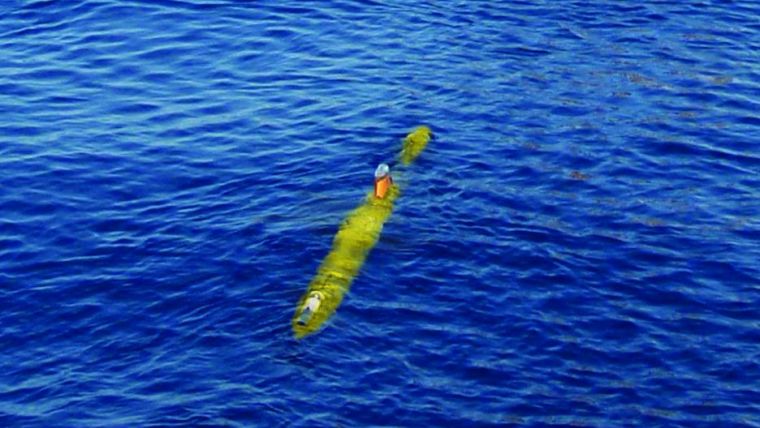Gavia AUV Demonstrates Capabilities of Ranger 2 USBL
Teledyne Gavia and Sonardyne International have successfully demonstrated the capabilities of the Ranger 2 Ultra-Short Baseline (USBL) system acoustically tracking a Teledyne Gavia Offshore Surveyor autonomous underwater vehicle (AUV) during trials in Plymouth, southwest England.
The trials, conducted at Sonardyne’s trials facility in Plymouth, UK, utilised the company’s vessel Echo Explorer. The vessel is set up for sea trials and offers great flexibility to deploy subsea equipment. The Echo Explorer is equipped with a crane to assist in deploying equipment such as AUVs and small ROVs and the highly experienced and professional crew ensured that the mission was a success.
During the demonstration, the AUV was launched and programmed to transit significant distances whilst being tracked by Ranger 2 and using the AUV’s own modem to update its Inertial Navigation System. After the vehicle was recovered, the post-processed data demonstrated that the integration was successful.
The AUV was equipped with Sonardyne’s 6G Nano transponder, specifically designed to acoustically position small underwater vehicles and divers. The small, lightweight, and wirelessly rechargeable payload allows easy and unobtrusive attachment to AUVs such as the Gavia.
Flexibility
The Gavia AUV is made up of ‘plug-and-play’ modules, which can be brought together and configured in the field. When assembled with a set of survey-grade sonar modules, a Gavia AUV becomes a self-contained survey solution with a low logistics footprint that is capable of carrying out a wide range of missions. Gavia modules are available in 500 or 1,000m depth rating and are interchangeable on any Gavia AUV in the field. Gavia AUVs are typically operated from vessels of opportunity providing cost effective solutions compared to dedicated survey vessels, ROVs or large towed bodies. The modularity means that the Gavia AUV specification is flexible: all modules are designed around a base 20cm diameter system, which includes a nose module, battery module, control module and propulsion module; the AUV length and weight in the field will depend on the set of sonar, navigation, additional battery and ancillary modules chosen for a particular mission. A Gavia AUV has the flexibility to meet the requirements of each task as it arises; it does not have to be dedicated to only one task.
Speaking of the trials, Arnar Steingrimsson, director of Strategic Business Development – AUVs for Teledyne Marine Vehicles said htat with Sonardyne’s engineering team, they were able to demonstrate Gavia’s autonomous technology to oil and gas customers. Sonardyne’s Ranger 2 USBL system is a proven technology in the oil and gas domain and was an important requirement for the customer to enable high accuracy navigation during deep water operations of Gavia AUVs. The integrated demonstration confirmed the commitment to meet their requirements.
Teledyne Gavia and Sonardyne were able to demonstrate improved absolute accuracy by using the USBL to aid the navigation solution.














